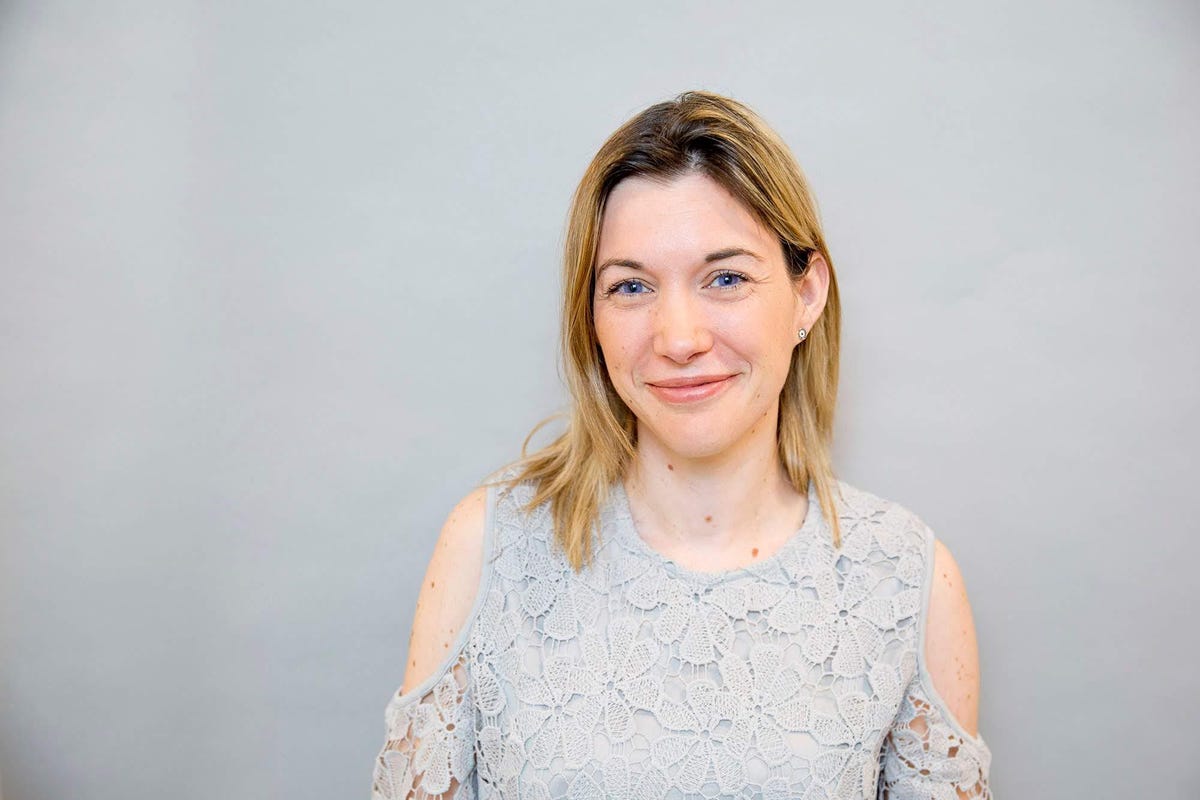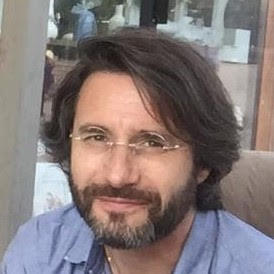
Startup InfinityQ Technologies is changing the paradigm for quantum computing, says co-founder and CEO Aurélie Hélouis.
InfinityQ TechnologiesPeople often fixate on quantum computing as a hardware technology, a new kind of transistor, but it may make sense to be less literal, less clinical, and a bit more broad-minded.
That is the premise of a computer startup called InfinityQ Technologies that came out of stealth mode April 29th, promising to do quantum computing with all of its benefits but without the tedium of a sub-zero refrigerator stuffed full of unstable materials.
The key is taking the analog of the qubit, finding a way to do qubits in hardware that is a lot less exotic than typical quantum hardware.
“We can create artificial atoms that make possible circuits that behave like a quantum system,” said InfinityQ’s Aurélie Hélouis in an interview with ZDNet via Zoom. “Our qubits are quantum analog circuits.”
InfinityQ takes advantage of the fact that quantum phenomena such as “super-position,” where two values can exist simultaneously for a bit of information, can be represented in a number of ways.
As Stephen M. Barnett, physicist at the University of Strathclyde in Glasgow, has written, “from the perspective of quantum information theory any two-state quantum system can represent a qubit.”
The “idea of a qubit,” according to Barnett, “like the bit in classical information theory, has a generality that is independent of its physical realization.”
So, a quantum system doesn’t have to necessarily be a trapped ion, as in the case of Honeywell’s quantum machine, or a Majorana fermion, as in the case of Microsoft’s experiments in quantum. It can be simpler material that can produce the same phenomena to be measured but with less mess.
InfinityQ’s solution is analog, specifically chips made with CMOS silicon, no exotic material, said Jean-Michel Sellier, head of research, in the same interview. The magic, the secret sauce, he says, is in how the circuits are connected.
“We have come up with an analog circuit that behaves exactly like an electron would behave inside an atom in a lambda configuration,” said Sellier. “You have a ground state and one excited state, so this is a qubit, but instead of using real atoms, we have something that behaves exactly like real atoms.”
Sellier and team are not disclosing the details of the chip until the patent documents are filed. But it is possible to surmise some elements. Analog circuits, unlike traditional digital chips, represents the flow of current. Flow can be measured as amplitude peaks and valleys.
With a paradigm of energy flow, the use of an analog chip can mimic in some senses what is being measured in quantum systems. It is different from running qubits through a “gate” that mimics classical switched electrons.
“The gate paradigm is different from us,” said Hélouis, referring to all conventional quantum systems. “We are closer to the adiabatic and the annealing paradigm right now.”
The paradigm that Sellier and Hélouis describe is one that shows up in artificial intelligence in its “connectionist” or deep learning version. It is an energy model.
Also: Quantum: It’s still not clear what it’s good for, but Amazon and QCI will help developers find out
So-called simulated annealing is one of the earliest approaches to modern deep learning, going back to experiments by Scott Kirkpatrick and colleagues at IBM in the 1980s. One takes an optimization problem consisting of many constituent elements of a system, a problem with lots of variables, such as optimal travel routes between cities, or the layout of chip circuits. One loosens constraints, what is called “heating up” the system. And then one slowly “cools” the system by reapplying constraints, reining in the possible configurations. The metaphor comes from the real-world practice of annealing metals by first melting and then slowly cooling them.
At some point, the system reaches a steady state, and the measure of that steady state is the solution to a problem.
“At some point the system reaches a stationary regime, and it’s where we obtain the solution,” explained Hélouis.

“We can exploit super-positional states, but we don’t need entanglement like other people do,” says Jean Michel Sellier, head of research.
InfinityQ TechnologiesThis approach can yield super-positional solutions, just like quantum computing in a fridge, but without the need for quantum entanglement, said Sellier, and without the need for masses of qubits to perform error correction, and with vastly less power than the quantum hardware.
“We can exploit super-positional states, but we don’t need entanglement like other people do,” he said.
The paradigm is timely because what are called energy models, which all stem from Kirkpatrick’s work in the 1980s, are gaining increasing currency in AI. One AI luminary, Facebook’s Yann LeCun, recently has extolled the virtues of those 1980s approaches and their continuing relevance.
It seems analog, and energy models, may be coming back into style just like the ’80s.
InfinityQ took shape as Hélouis and Sellier started bouncing back and forth ideas about quantum at Montreal’s MILA institute, a hotbed of artificial intelligence, where both were working for MILA’s legendary AI director, Yoshua Bengio.
Also: Quantum computing could be useful faster than anyone expected
Hélouis’s background included sixteen years in the French navy, including responsibility for French jet fighter technology, a transition to civilian life in Montreal, including a couple of startup ventures already to her credit. She maintains a predilection for getting things taken care of, she said. “On time, on target, that’s my motto,” Hélouis told ZDNet.
Sellier had transitioned from studying pure mathematics to working on semiconductor applications of physics. While at Purdue University in the U.S., in a post-doctoral position working on nano-technology, he began to have an insight about how conventional electronics would lead to quantum computing issues. “if you reduce the dimensions of transistors, the question becomes, will they continue to work?” Sellier explained. “In order to understand that, you have to understand quantum mechanics, and so quantum effects start to become very relevant.”
Despite different backgrounds and temperaments, the duo clearly sparked each other’s curiosity, both enchanted by changing the paradigm in quantum and in electronics. Despite a background in getting things done, Hélouis is equally at home with the esoteric nature of energy models. Despite a career spent with esoteric ideas, Sellier clearly is energized by putting things into practice. “Quantum is fascinating, but if you can build things, it’s even better,” said Sellier.

“We are the red-headed step-child of the Q-verse,” says InfinityQ’s director of growth, Jackie Hudspeth.
InfinityQHélouis and Sellier started the company two years ago. They lured Jackie Hudspeth, who was working on an MBA at Montreal’s McGill University, to be their director of growth.
Hudspeth, who says she caught the entrepreneurship bug as a teenager, is quick to rattle off the investment figures for the company. The company has received $1 million from government and angel investors in a seed round, and is in the process of closing a $5 million extension round, with an expected post-money valuation in the neighborhood of $15 million.
Rounding out the founding group is chief technology officer Kristina Kapanova, who had been Sellier’s PhD student, and brings expertise in quantum computing but also high-performance computing and machine learning forms of AI. InfinityQ are ten people in total with some additional outside advisors.
Being outside the mainstream of quantum, and headquarted in Montreal, “We are the red-headed step-child of the Q-verse,” quipped Hudspeth.
The focus at the moment is proving out the technology doing contract work for clients as a cloud computing resource, with five active projects in the pipeline, as a SaaS business model. In that sense, InfinityQ is building “the full stack,” said Hélouis, a complete quantum computer, similar to the dedicated AI machines being built by SambaNova Systems and Cerebras Systems and other AI startups.
Applications in these early projects are in financial, pharma and logistics tasks, said Hudspeth. “Those are the focus for us, we already have clients there who have a willingness to pay, with discussions with about fifteen different logos,” she said.
These early applications, both commercial and otherwise, are all the kinds of optimization problems that are the mainstay of quantum. And there is demonstrable return on investment, said Hélouis.

“The gate paradigm is different from us,” says InfinityQ’s co-founder and CEO, Aurélie Hélouis, right, referring to all the conventional quantum computing efforts. “We are closer to the adiabatic and the annealing paradigm right now.” InfinityQ’s analog chip can compute optimization problems such as the traveling salesman, and practical matters such as protein-protein docking, at a fraction of the time of conventional digital computing and without the mess of hardware qubits. She is accompanied by Jackie Hudspeth, director of growth.
InfinityQ“We benchmarked the traveling salesperson problem and we were one hundred thousand times faster than classical computers,” said Hélouis. “What we have now — and we are improving — we are already at sub-exponential execution time” for the infamous traveling salesperson problem, said Sellier. The company was able to solve for 110 cities with a solution that the company was able to demonstrate was correct.
While the traveling salesperson is a heavy-lifting intellectual challenge, problems closer to commercial benefit are things such as protein-protein docking for drug discovery. “Even if you diminish by a factor of 100 the time, it is already something the pharmaceutical companies will pay for,” said Hélouis. “It is a highly complex problem, and even with classical computers it becomes very complicated.”
For high-frequency trading, an application being explored is the optimization of execution of limit orders, as well as risk assessment for exotic pricing of securities.
“It will definitely speed up the Monte Carlo problem, especially in finance, and can be very disruptive,” she said, referring to portfolio optimization. “We are finishing the development of a quantum analog random number generator with applications in cyber-security.”
Complex materials formation is another promising domain, said Hudspeth. Others include “full transformed calculation in signal analysis,” with fast Fourrier transforms, said Hélouis. “That’s something companies are very interested in.”
Among the projects are a memorandum of understanding with Europe’s EuroHPC center in Bulgaria to integrate the chip with that machine under construction.
InfinityQ’s existing analog chip is being locally fashioned in Canada, and the plan is to use conventional CMOS transistor shrinks to reach greater and greater density of circuits — of course, far faster than the mainstream of quantum can multiply its qubits.
“Right now we have hundred-plus qubits, and the idea is to go to 10,000 next year,” said Hélouis. “The idea is to shrink the technology to add more qubits to extend the technology and to add more capabilities.”
As the company achieves greater and greater chip miniaturization, the company will make available an on-premise version of its computer, “with a hybrid SaaS model for those larger clients like big banks that want to have a little more control,” said Hudspeth.
The company is already talking with defense companies, said Hélouis. “The beauty of having a chip is it can be integrated into devices, launched into space, or deployed remotely on ships or airplanes, or remotely, in Afghanistan or wherever, where you have the need to crunch data.”






















